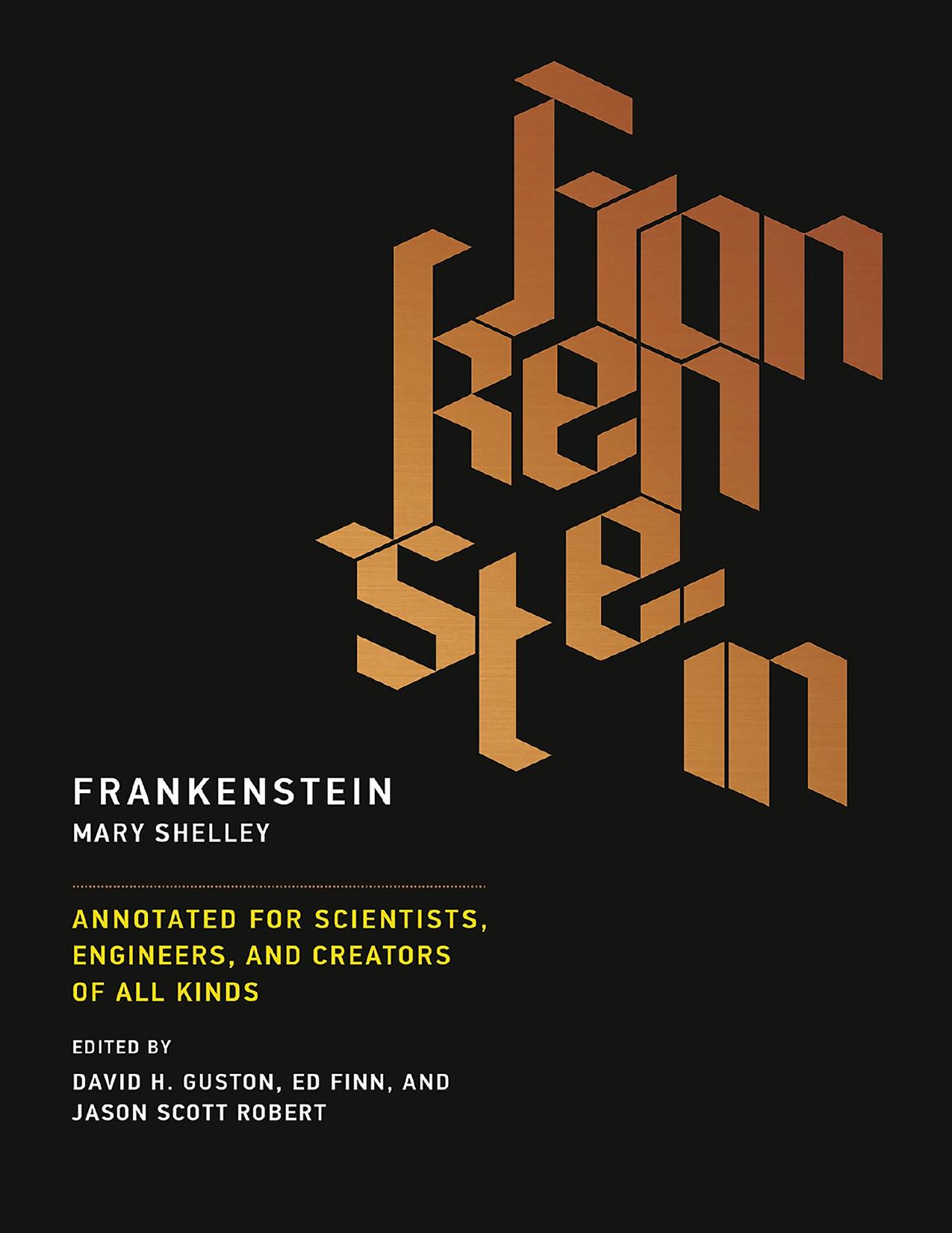Frankenstein: Annotated for Scientists, Engineers, and Creators of All Kinds by Mary Shelley

Author:Mary Shelley
Language: eng
Format: mobi, epub, pdf
Publisher: The MIT Press
Published: 2017-05-30T00:00:00+00:00
14. Although there are separate processing centers in the brain for the various senses, the pattern of how each of these centers processes information is similar. For example, the somatosensory cortex is the area of the brain where touch is processed. Here, different groups of neurons correspond to touch on different parts of the body. Likewise, in the auditory cortex, there are separate regions that process different frequencies of sound. All of these systems work to give us a comprehensive understanding of all our sensory experiences. Upon his creation, the creature is accosted with sensory overload. He initially struggles to distinguish between all of these new sensations, but his brain eventually learns how to process everything in tandem to give him a coherent view of the surrounding world.
Stephanie Naufel.
15. The emotions of shock and surprise reflect violations of expectations. When you experience a shock or surprise, your physiology causes you to prepare to understand the situation in greater detail. You draw in your breath, widen your eyes, and expand your focus of attention to see what might have caused the violation of expectation. You also get a release of adrenaline in case the surprise reflects a need to fight or flee. A very large violation of expectations, which leads to full-blown shock, can leave someone unable to move or speak for several seconds. This near paralysis provides time to observe what could have caused the surprise and prevents someone from taking an action that might be dangerous for her until she understands the situation more fully.
Arthur B. Markman.
16. We can think of kindness from two different perspectives: terminating and ongoing. A terminating perspective focuses on an individual act of kindness as not being valuable in itself but mainly valuable in the aim it will achieve. Conversely, an ongoing perspective privileges both the individual act itself and the accumulation of acts over time, which might lead to some particular aim. Both perspectives are rooted in a need to do for others, but the former rejects kindness as a process. The creature seems to understand kindness as a process. Through his many encounters with the family, he develops an ever-deepening recognition and awareness of them as individuals doing for one another. This recognition is significant because spending the time to build awareness of others is part of the mechanism of kindness: thus, when the creature spends this time, he has already begun the process of kindness himself. He progresses from simply recognizing and becoming aware of others to not only refraining from stealing their food but caring for them by chopping wood and leaving it for them at their doorstep. As we can see, he feels tremendous gratification from his actions. Ongoing kindness involves all of the features the creature experiences: recognition, awareness, and care. Scientific endeavors outside of Victor’s might be equally rewarded by using ongoing kindness as an ethical approach to research. By recognizing the possible implications of our scientific endeavors, being aware of not only the benefits but potential
Download
Frankenstein: Annotated for Scientists, Engineers, and Creators of All Kinds by Mary Shelley.epub
Frankenstein: Annotated for Scientists, Engineers, and Creators of All Kinds by Mary Shelley.pdf
This site does not store any files on its server. We only index and link to content provided by other sites. Please contact the content providers to delete copyright contents if any and email us, we'll remove relevant links or contents immediately.
| African American | Asian American |
| Classics | Anthologies |
| Drama | Hispanic |
| Humor | Native American |
| Poetry | Southern |
Crazy Rich Asians by Kevin Kwan(9167)
How to Bang a Billionaire by Alexis Hall(8074)
Giovanni's Room by James Baldwin(7192)
Little Fires Everywhere by Celeste Ng(7112)
Win Bigly by Scott Adams(7094)
Tease (Temptation Series Book 4) by Ella Frank(5591)
Pachinko by Min Jin Lee(5586)
The Fire Next Time by James Baldwin(5249)
The Perks of Being a Wallflower by Stephen Chbosky(4573)
China Rich Girlfriend by Kwan Kevin(4498)
Bluets by Maggie Nelson(4473)
First Position by Melissa Brayden(4446)
The Sympathizer by Viet Thanh Nguyen(4305)
Rich People Problems by Kevin Kwan(4246)
A Little Life (2015) by Hanya Yanagihara(4172)
Right Here, Right Now by Georgia Beers(4124)
Walking by Henry David Thoreau(3894)
Catherine Anderson - Comanche 03 by Indigo Blue(3568)
The Death of the Heart by Elizabeth Bowen(3552)
